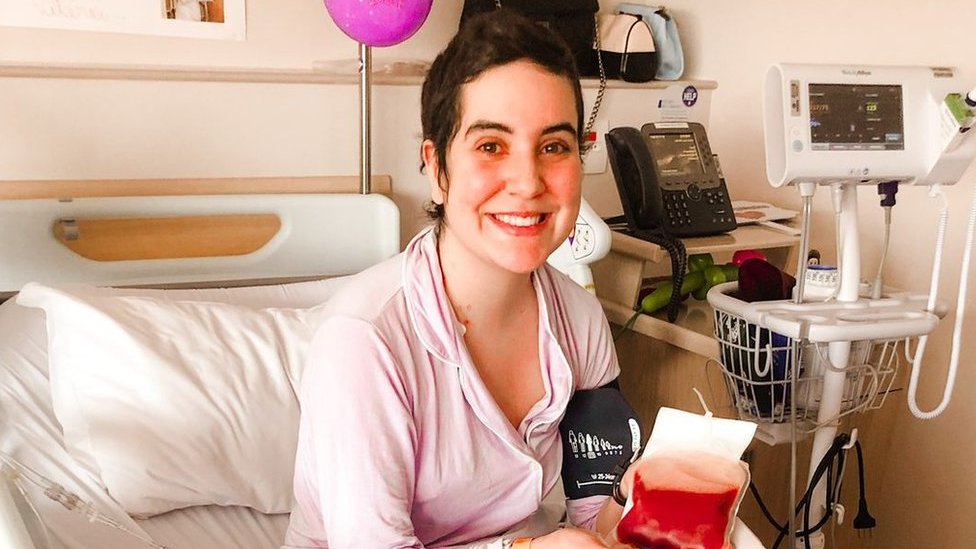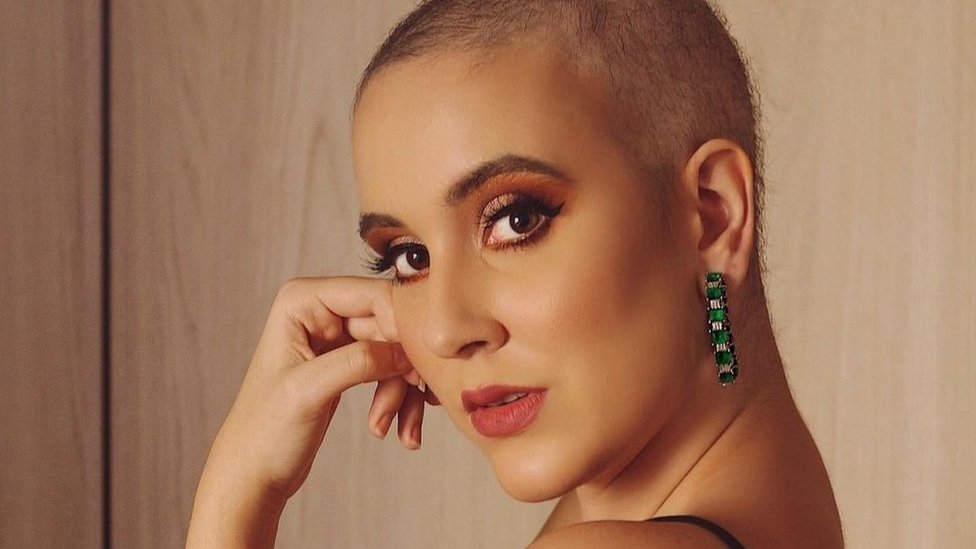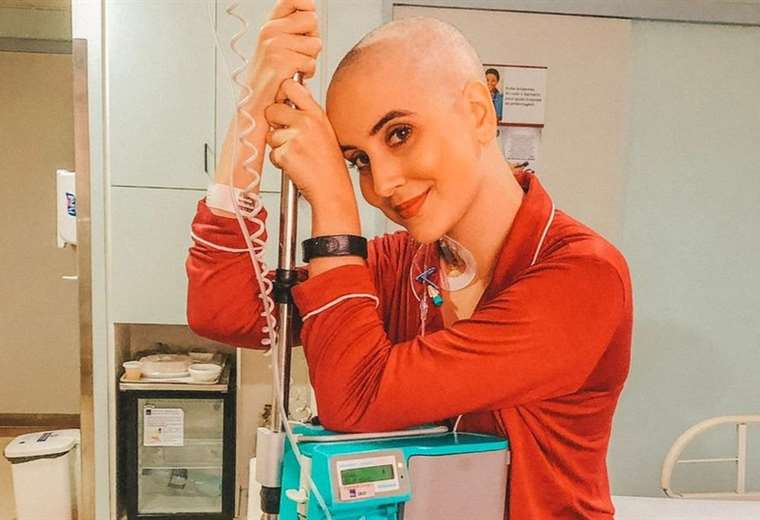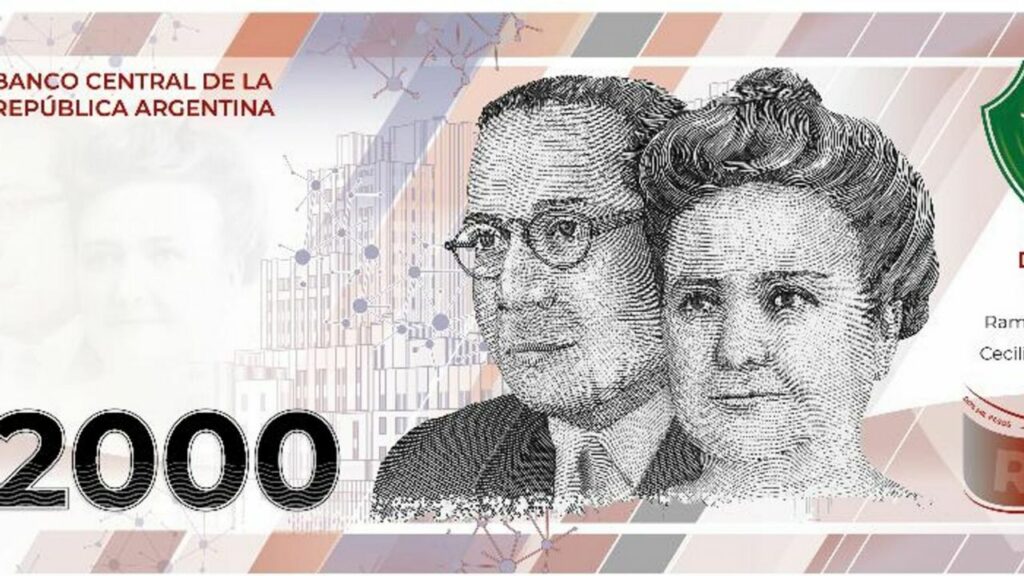February 4, 2023, 10:02 AM
February 4, 2023, 10:02 AM
In 2019, the 27-year-old Brazilian writer Duda Riedel worked as a salesperson in a clothing store in Rio de Janeiro. The constant tiredness and pain in her legs that she felt, she attributed to the hours she spent on her feet at work.
Days after feeling excessively tired, she was startled to wake up to see blood stains on her pillow. Identifying that they had grown out of her gum, she sought out a dentist.
“The professional said I needed to have my teeth cleaned. I did, he said everything was fine and I went home,” he recalls.
However, the symptoms did not stop there. The writer then began to experience headaches and have a stuffy and runny nose, which, according to what the doctors told him, it indicated that he had sinusitis.
In increasing pain, she twice looked for the hospital emergency room that her health insurance served.

“At the hospital, the doctor said that I had sinusitis, he prescribed me a syrup and I returned home. That’s how it was both times: they prescribed me a medicine and they discharged me. They never asked me for a blood test.”
From sinusitis to leukemia
Diagnosed with sinusitis, Duda followed the treatment indicated by the doctor with syrups and returned to her routine, including going out with friends. A few weeks later, a bruise on his leg called him attentionsince he did not remember having run into him before.
Two days later, alone in her apartment, she began to feel unwell and had to be rushed to the hospital.
“Then the terror began, because I vomited blood and that scared the hell out of me. So much so that I ran to the hospital, where they gave me serum and asked me for a blood test. When the doctor saw that she was alone, she got scared, she said that I was sick, but they still didn’t know what she was and they asked me to call someone to come with me,” says Duda.
With family living far away, he asked a friend to come to the hospital and stay as a chaperone.
The doctors’ first suspicion was that Duda could have internal bleeding since his examination had indicated that he had only 45,000 platelets, a number well below what is considered normal (150 to 400,000 per microliter of blood).
The experts then requested that an endoscopy be performed, but the result was negative due to suspicion of bleeding.
“They put me in a room and left me there. But since I already felt fine, I wanted to leave, I was tired of staying in the hospital and I began to remove the tubes that I had in my hand. It was then that a nurse saw it and told me said: ‘watch out girl, leukemia kills‘. I panicked, because until then no doctor had told me about the leukemia,” Duda recalls.
Confused by the supposed diagnosis of leukemia and the lack of information from the doctors, she left the hospital and went home. Hours later, she sought care at another hospital in the city, where she was immediately admitted.
The next morning, her family had already traveled from Fortaleza to Rio de Janeiro to accompany her to the health institution to treat what she was diagnosed with as blood cancer.
Bone marrow transplant
Initially, Duda underwent three cycles of chemotherapy, but due to the severity of the disease, acute myeloid leukemia, doctors said a bone marrow transplant was necessary.
No relative of the writer was 100% compatible with her, the brothers were only 50% compatible. Therefore, it was necessary to search for a donor in the Brazilian National Registry of Bone Marrow Donors.
“It took six months of searching, waiting and a lot of anxiety until we found a compatible donor. In November 2019 I had my long-awaited transplant and I was reborn. Today I celebrate two birthdays, that of my birth and that of my transplant.”

Cured of the disease, Duda undergoes an annual medical follow-up with a multidisciplinary team to make sure that everything is fine with her health.
What is leukemia and what are the symptoms?
Leukemia is the name given to the malignant disease that affects leukocytes, blood cells and bone marrow cells responsible for defending our body. These diseased cells accumulate in the bone marrow, replacing healthy cells.
There are several types of leukemia: lymphoid or myeloid, acute or chronic. And there are four main types: acute myeloid leukemias (AML), acute lymphocytic leukemias (ALL), chronic myeloid leukemia (CML), and chronic lymphocytic leukemia (CLL).
“Leukemic cells can be very immature, as a result of blocked cell differentiation (a process that transforms and specializes the cell in one function), and in this case the cells cannot perform any of the functions of normal blood cells. In this case, we call leukemia acute diseases,” explains Eduardo Rego, coordinator of the Acute Leukemia Service at Icesp (São Paulo State Cancer Institute).
“When some genetic alterations partially block differentiation and the leukemia cells maintain the appearance and some functions of normal blood cells, we call it chronic leukemias.”
With the “incorrect” functioning of cells, some symptoms begin to appear. They are mainly due to the replacement of normal bone marrow by leukemia cells, which causes a decrease in red blood cells.
“The main symptoms of leukemia are anemia, paleness, tiredness, palpitations, decreased immunity and greater predisposition to infections, with fever, general malaise, decreased platelets, increased probability of bleeding and the appearance of purple spots on the body. The accumulation of diseased cells can also cause an enlarged spleen,” explains Iara Zapparoli Gonçalves, deputy coordinator of the hematology department at Hospital de Amor de Barretos.
treatment for leukemia depends on the type and at what stage is it discovered the illness. It may involve chemotherapy, immunotherapy, radiation therapy, bone marrow transplantation, or a combination of different treatments.
Remember that you can receive notifications from BBC Mundo. Download the new version of our app and activate them so you don’t miss out on our best content.
















